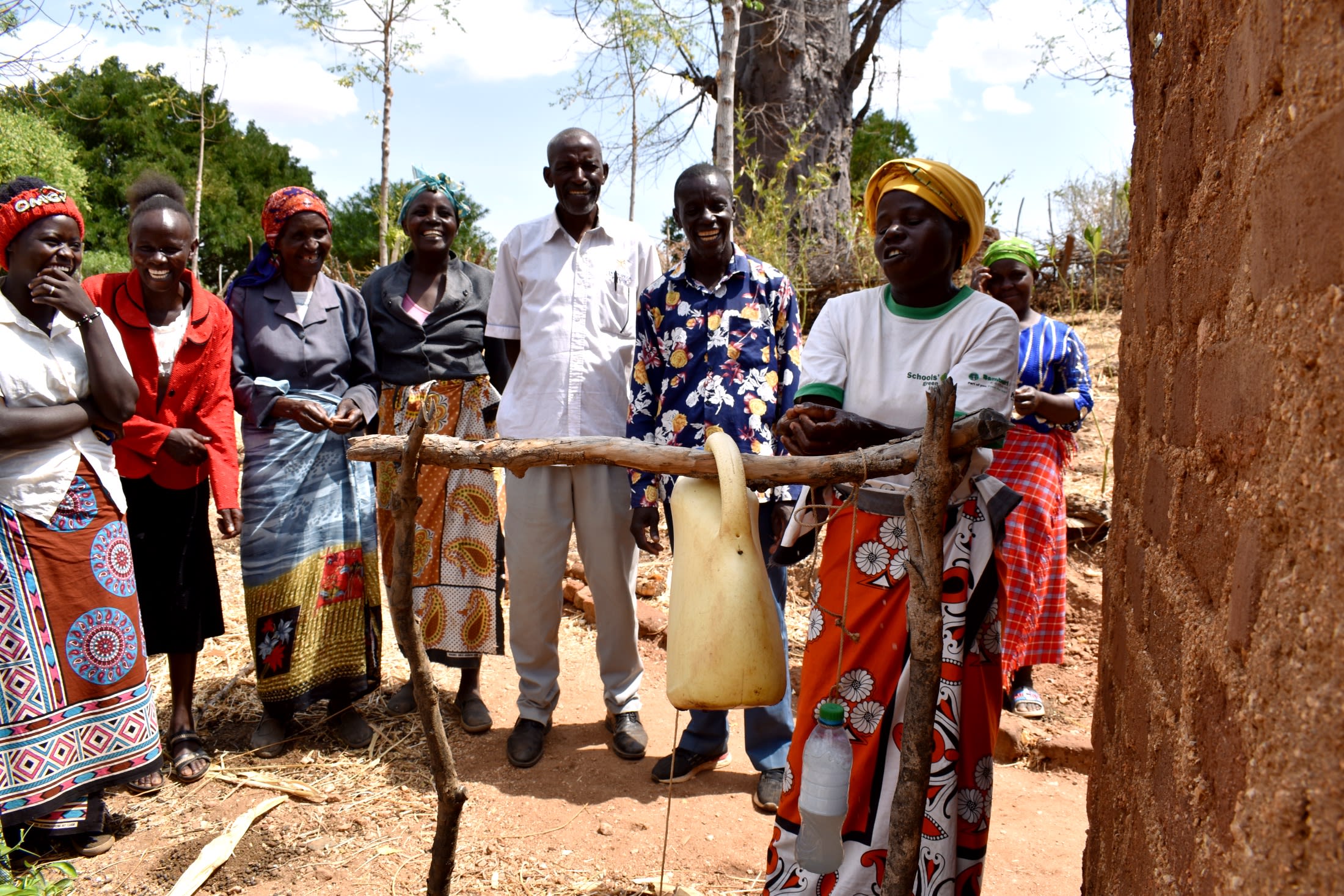Although there is a protected hand-dug well in Kanyoeni, many of the people in the community's farthest reaches still fetch their water from scoop holes dug into the earth. We installed a sand dam and shallow well in this community in 2022, but for about 75% of Kanyoeni's people, the journey to clean water is still far too long.
The 350 people who live here are divided by distance. Those living close to the new water point can drink freely, cook easily, clean their homes, irrigate their crops, sell their produce, and live comfortably. Those far away still struggle with these everyday tasks - all because they have to walk kilometers each way to fetch water for their households.
“Households with travel times greater than 30 minutes have been shown to collect progressively less water. Limited water availability may also reduce the amount of water that is used for hygiene in the household.” (The Relationship between Distance to Water Source and Moderate-to-Severe Diarrhea in the Global Enterics Multi-Center Study in Kenya, 2008–2011) - American Journal of Tropical Science and Medicine
What makes matters significantly worse is the current (as of November 2022) drought affecting the Horn of Africa. This region hasn't seen any rain in three years, and water is becoming harder and harder to find.

"The steep and long terrain in the area makes fetching water a difficult task," said 28-year-old farmer Manzi Ngai (pictured above). "My family has to carry water on their back[s] while walking up the steep hill, which makes them exhausted. I am also unable to care for my children because [my] crops and vegetables cannot thrive under the adverse dry climate."
It's easy to see why people might choose to forego the longer journey to the sand dam's well when they could significantly shorten their daily walking time over hilly terrain instead. But the water from the scoop holes is open to contamination, and drinking it makes people sick—especially children, whose immune systems are not as strong.

"I have to carry water every day to the distant school and I am often forced to reman at home when I have no water to carry to school," said 16-year-old Mukami M. (pictured above starting the arduous trek back home from the faraway well). "The jerrycans we use are open and accumulate dust during the day, further contaminating the water. I have fallen sick multiple times, like last term, when I developed stomachaches and had to take traditional herbs and salt acquired by [my] parents."
The people of Kanyoeni need a water source closer to home so they can recover both financially and physically from the harsh effects of water scarcity.
Note: Our proposed water point can only serve 300 people per day. We are working with the community to identify other water solutions that will ensure all 350 people in the community have access to safe and reliable drinking water.
What We Can Do:
Our main entry point into this community has been the Self-Help Group, which comprises households working together to address water and food scarcity in their region. These members will be our hands and feet in constructing water projects and spreading the message of good hygiene and sanitation to everyone.
Hand-Dug Well
This particular hand-dug well will be built adjacent to a sand dam project, which will supply clean drinking water once it rains. We have provided the group with the tools needed for excavation. With the guidance of our artisans and mechanics, the excavated well will be cased, sealed with a well pad, and then finished with a new AfriDev pump.
Excavation takes a month or more on average, depending on the nature of the rock beneath. Construction of the well lining and installation of the pump takes 12 days maximum. The well will be lined with a concrete wall including perforations so that once it rains, water will filter in from the sand dam.
This well will bring clean water closer to families.
New Knowledge
These community members currently do their best to practice good hygiene and sanitation, but their severe lack of water has significantly hindered reaching their fullest potential.
We will hold hygiene and sanitation training sessions with the Self-Help Group and other community members to teach essential hygiene practices and daily habits to establish at the personal, household, and community levels. This training will help to ensure that participants have the knowledge they need to make the most out of their new water point as soon as the water is flowing.
One of the most important topics we plan to cover is handling, storage, and water treatment. Having a clean water source will be extremely helpful, but it is useless if water gets contaminated when it is consumed. We will also emphasize the importance of handwashing.
The community and we firmly believe that all of these components will work together to improve living standards here, which will help to unlock the potential for these community members to live better, healthier lives.
We typically work with self-help groups for 3 to 5 years on multiple water projects. We will conduct follow-up visits and refresher training during this period and remain in contact with the group after all of the projects are completed to support their efforts to improve sanitation and hygiene.





 Protected Dug Well
Protected Dug Well
 Rehabilitation Project
Rehabilitation Project


























